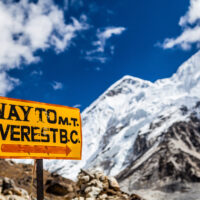Preserving Ladakhi Culture
12.19.2011
Maybe it’s just human nature that young people want to move on, go where the action is, and express themselves in a way different from their parents. Once they get a chance to do that, there may be no stopping them.
In Ladakh, a remote corner of the Indian Himalayas, this has created a sudden and dramatic change in the culture. Long isolated from the outside world, Ladakh saw its first road from the outside in 1960, and starting in the 70s, outsiders came in for amazing trekking, adventuring, climbing, and even mountain biking. To us, it’s a paradise; but to the locals, it’s home.
We read a story from ANI (basically India’s AP) called “Need to preserve Ladakhi Culture, amid “shifting sands,” and we thought a few things. One was that it’s hard to begrudge young people seeking greater prosperity in cities and the outside world; the nomadic or rural life probably sounds better than it really is. We also cringe when we hear about the problems that come in with irresponsible and unplanned tourism. Another thought was that maybe this is all inevitable, and one day just about all of us will live in cities.
But what really struck was how quickly these traditional cultures can disappear, once exposed to the outside world. So we applaud groups like the Charkha Development Communication Network, whose mission is “Improved social and economic inclusion of rural marginalized communities in development processes.” In Ladakh they are helping youth and women to make their voices heard, to encourage responsible development and preserve cultural traditions.
We want to adventure: to trek Ladakh’s valleys and climb its peaks. And we want to do it before it becomes just another corner of TouristLand. But we also support initiatives like these, to empower local people to have greater say over their future, and to remind everyone that no one wants the whole world to look and act like westerners.



